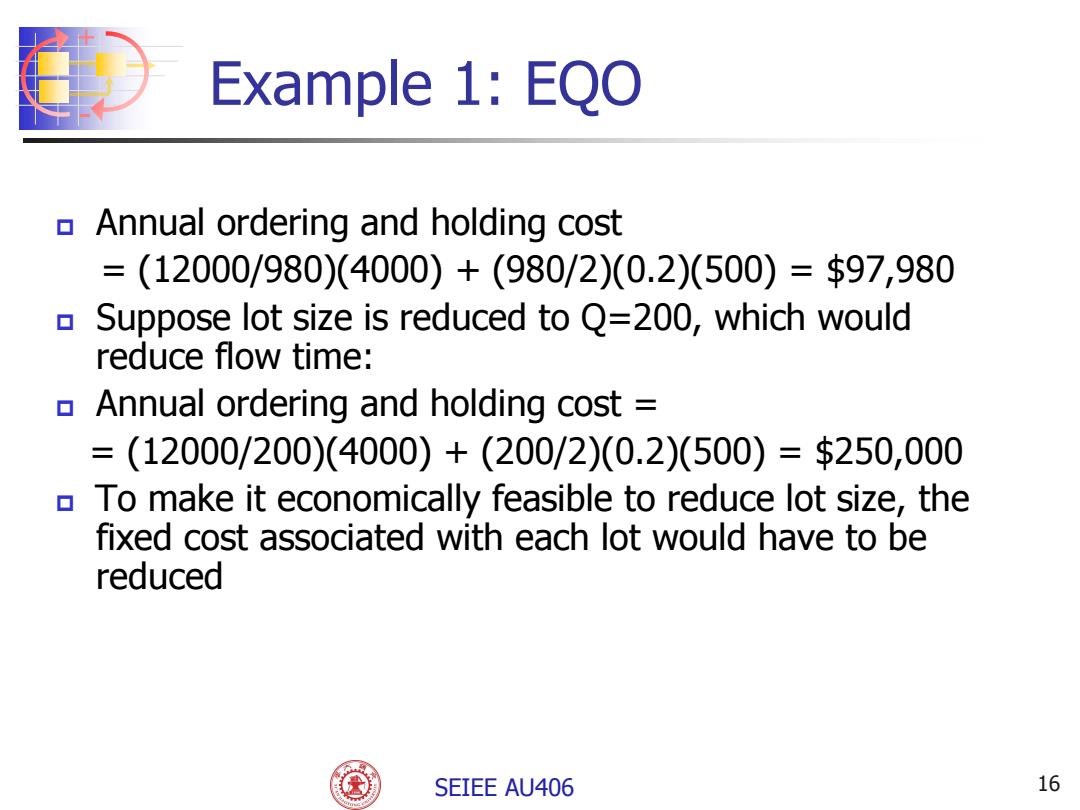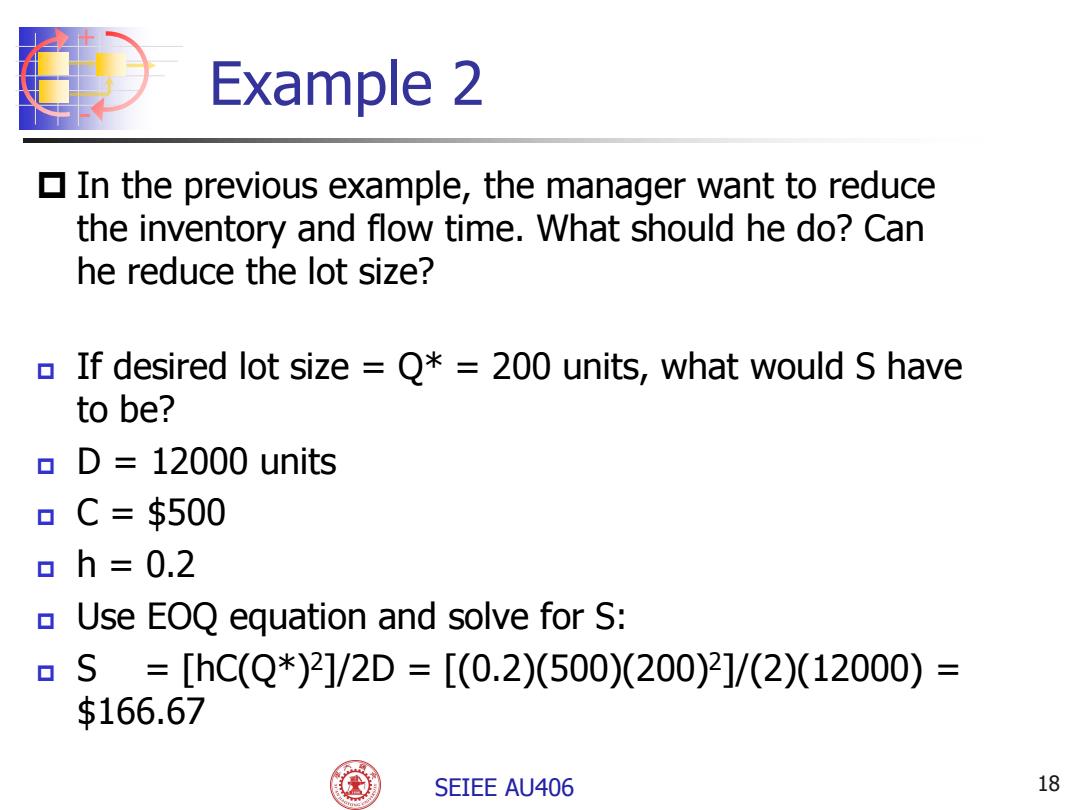
Example 1:EQO Annual ordering and holding cost =(12000/980)(4000)+(980/2)(0.2)(500)=$97,980 a Suppose lot size is reduced to Q=200,which would reduce flow time: Annual ordering and holding cost =(12000/200)(4000)+(200/2)(0.2)(500)=$250,000 To make it economically feasible to reduce lot size,the fixed cost associated with each lot would have to be reduced SEIEE AU406 16
+ - SEIEE AU406 Example 1: EQO Annual ordering and holding cost = (12000/980)(4000) + (980/2)(0.2)(500) = $97,980 Suppose lot size is reduced to Q=200, which would reduce flow time: Annual ordering and holding cost = = (12000/200)(4000) + (200/2)(0.2)(500) = $250,000 To make it economically feasible to reduce lot size, the fixed cost associated with each lot would have to be reduced 16

Discussion on EOQ If the optimal lot size is 5.15,however you need an integer number,what is your choice? Total ordering and holding costs are relatively stable around the economic order quantity.A firm is often better served by ordering a convenient lot size close to the economic order quantity rather than the precise EOQ. If demand increases by a factor of k,the optimal lot size increases by a factor of vk.The number of orders placed per year should also increase by a factor ofvk.Flow time attributed to cycle inventory should decrease by a factor of vk, SEIEE AU406 10-17
+ - SEIEE AU406 Discussion on EOQ Total ordering and holding costs are relatively stable around the economic order quantity. A firm is often better served by ordering a convenient lot size close to the economic order quantity rather than the precise EOQ. If demand increases by a factor of 𝑘, the optimal lot size increases by a factor of 𝑘. The number of orders placed per year should also increase by a factor of 𝑘 . Flow time attributed to cycle inventory should decrease by a factor of 𝑘. 10-17 If the optimal lot size is 5.15, however you need an integer number, what is your choice?

Example 2 In the previous example,the manager want to reduce the inventory and flow time.What should he do?Can he reduce the lot size? If desired lot size Q*200 units,what would S have to be? ▣D=12000 units 口 C=$500 oh=0.2 Use EOQ equation and solve for S: ▣S=[hC(Q*)2]/2D=[(0.2)(500)(200)2]/(2)(12000)= $166.67 SEIEE AU406 18
+ - SEIEE AU406 Example 2 If desired lot size = Q* = 200 units, what would S have to be? D = 12000 units C = $500 h = 0.2 Use EOQ equation and solve for S: S = [hC(Q*)2 ]/2D = [(0.2)(500)(200)2 ]/(2)(12000) = $166.67 18 In the previous example, the manager want to reduce the inventory and flow time. What should he do? Can he reduce the lot size?

Aggregating Multiple Products in a Single Order Transportation is a significant contributor to the fixed cost per order Can possibly combine shipments of different products from the same supplier same overall fixed cost shared over more than one product effective fixed cost is reduced for each product lot size for each product can be reduced Can also have a single delivery coming from multiple suppliers or a single truck delivering to multiple retailers Aggregating across products,retailers,or suppliers in a single order allows for a reduction in lot size for individual products because fixed ordering and transportation costs are now spread across multiple products,retailers,or suppliers SEIEE AU406 19
+ - SEIEE AU406 Aggregating Multiple Products in a Single Order Transportation is a significant contributor to the fixed cost per order Can possibly combine shipments of different products from the same supplier same overall fixed cost shared over more than one product effective fixed cost is reduced for each product lot size for each product can be reduced Can also have a single delivery coming from multiple suppliers or a single truck delivering to multiple retailers Aggregating across products, retailers, or suppliers in a single order allows for a reduction in lot size for individual products because fixed ordering and transportation costs are now spread across multiple products, retailers, or suppliers 19